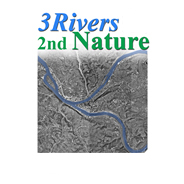Home> Rivers Re-Valued> Information and Authority
Information and Authority:
The Perception of Water Quality
Timothy Collins
(2002)
The question of water quality is complicated by physical realities. The sheer number of river and stream miles in our region is daunting given that there may be ten people from regulatory agencies available for field sampling on a good day. Developing a water quality baseline for this region is a primary goal if we are to have any sense of the relative success of costly infrastructure improvements. At the same time it is clear that we need good indicators that will reveal the most significant information about our surface waters with the least amount of funds. This region suffers from many needs and scarce funds. Developing an integrated (but strategic) biological, chemical, and pathogen indicator testing program is essential if we are going to move this region towards surface water quality and away from its history of physical, chemical, and biological degradation. Understanding the spatial realities of our surface water challenge makes a clear case for the skills and techniques of analysis to be diversified and the results widely distributed.
Currently, water quality monitoring is the primary charge (a secondary activity) of a range of local and state regulators, (The Allegheny County Department of Health, the Pennsylvania Department of Environmental Protection) a single multi-state agency (The Ohio River Sanitary Commission, ORSANCO) and two federal government agencies (The U.S. Army Corp of Engineers and the U.S. Geological Survey). Watershed associations, universities, and non-profits have all taken an interest in water quality monitoring as well, with the support of the Pennsylvania Department of Environmental Protection. Curiously, there is not a lot of raw data or interpreted information available.
Current physical chemistry and pathogen indicator water quality testing in Allegheny County continues to improve, although it is complicated and slowed by the political realities and machinations of powerful institutions. To date our regional water quality discourse has been homogenous and complicated by invested interests. To achieve long-term water quality investment and renewal we will need to diversify the sources of information, as well as the groups that access that information. We will need to change the economic realities of fieldwork and lab work. We will need to establish and publicize daily feedback loops about the quality of our living rivers and streams as well as their impacts. We will need to make the science of water quality matter by helping citizens to see water as a public component of the regional aesthetic that either defines us or damns us. Until we help the citizens and decisions makers see the clean water potential they will not care about the filthy problems of chronic sewer discharges and sewer overflows. Until we can reveal the cause and effect of action versus inaction on the environment and ecosystems, we are left with only one argument for infrastructure investment – regulatory penalty. Penalties are quite literally a “hell” of a way to convince a community to invest in their own environmental future.


